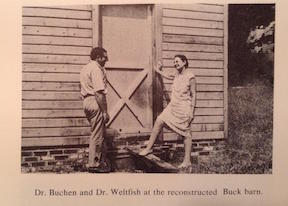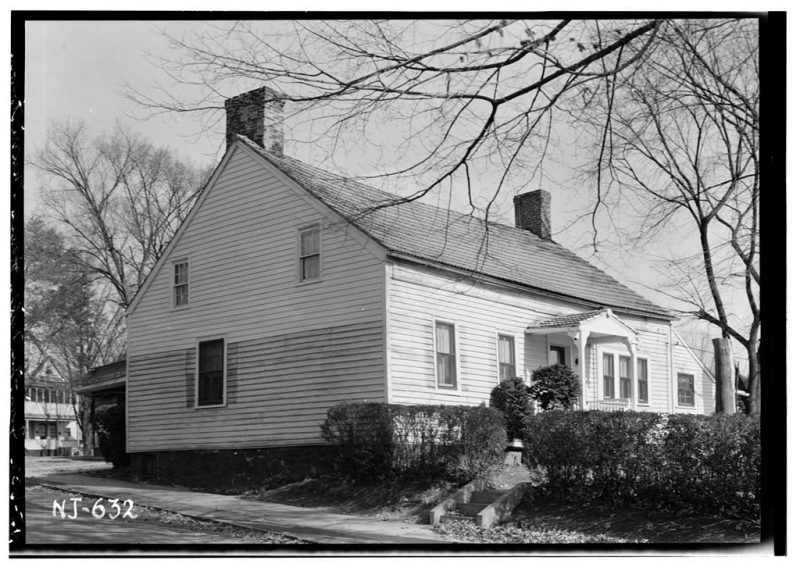The American Civilization Institute: A case study in radical public history education
25 January 2017 – Denise Meringolo

Gene Weltfish, founder of the ACIM.
Typically, the origins of public history education have been traced either to early twentieth-century applied history programs or to the first named public history program established in the 1970s at the University of California, Santa Barbara. Neither group of founders understood public history as a distinct field. Rather they built programs in order to expand the discipline’s intellectual influence and open up opportunities for traditionally trained historians to occupy non-traditional jobs.
Rooting the origins of public history education inside the discipline of history sheds light on an underappreciated tradition of public-facing scholarship. It also constrains our view of the field’s unique pedagogy and purpose. Public history educators operating from inside departments of history are forced to align their work with discipline-specific standards that segregate research, teaching, and service, and devalue collaborative forms of scholarship. In pushing against this, public history educators have been pivotal in broadening accepted notions of scholarly production and legitimizing non-traditional forms of research and knowledge production. Public history teaching has also often been held up as evidence of the value and success of university initiatives like service learning or civic engagement. This has given public history educators an opportunity to push for more sustainable and reciprocal forms of university-community partnership.
All of this is laudable, but it is incomplete. It has been difficult to clearly identify values and methods unique to public history education when they are obscured or subsumed by a department’s need to attract students or by administrators’ desire to improve community relations. In fact, public history educators often have been influenced by social, political, and cultural contexts quite outside of universities or departments of history. By identifying experiments in community-based education less strictly tied to university and college departments of history, we can open up more nuanced critical perspectives on the intersections among teaching, learning, and community development.

Timothy Mills House. Photo credit: Library of Congress
The American Civilization Institute (ACIM) of Morristown, New Jersey, is one such example. The idea for ACIM was hatched in the spring and summer of 1964. Morristown School District superintendent Harry Wenner, Morristown High School social studies teacher Jack Stewart, and Morristown school board member Dorothy Harvey hatched the idea of using the Timothy Mills House, a mid-eighteenth-century structure adjacent to Morristown High School, as a multi-disciplinary laboratory. To help them shape a program, they turned to anthropologist Gene Weltfish at Fairleigh Dickinson University. For the duration of the program–which ran from 1965 until 1969–Weltfish and Wenner served as co-directors. The ACIM is partially significant for having adopted a set of pedagogical approaches that have become common in public history education; it engaged faculty and students from Morristown High School and Fairleigh Dickinson University in a multi-faceted, multi-disciplinary, broadly collaborative, community-focused experiential learning program.
Even more important, my study of the ACIM suggests that these now-familiar techniques took shape neither as an effort to heighten the visibility and legitimacy of historians nor simply to expand students’ job opportunities. Rather, founders of the ACIM recognized that growing interest in historic preservation provided them with an opportunity to connect research and interpretation to political activism and advocacy.
The 1960s was a period of tremendous activity in the realms of historical commemoration and preservation. In New Jersey, the state’s tercentennial celebration coincided with national efforts to commemorate the centennial of the Civil War. Temporary commissions established to plan and manage these celebratory events promoted a broad program of history education and preservation. Across the state, local communities organized or expanded their local historical societies, and students joined history clubs. These initiatives found strong support in Morristown. Local people had long celebrated the town’s important ties to the Revolutionary War; Morristown National Historical Park was the first national historic site designated by the National Park Service in 1933. Thirty years later, the students and faculty participating in the ACIM did not challenge the centrality of the Revolution in Morristown’s past. However, they did establish a broader global context and a deeper historical timeline for understanding local history. They assembled archaeological, archival, and oral history collections, drawing new attention to Native American history, labor history, and race. Their efforts served to identify ethnic diversity and cross-cultural unity as historically viable community values.
This work was politically salient. During the 1960s, long-simmering inequalities rose to the surface in Morristown, threatening to undermine a well-established record of integration in the local high school. For over 100 years–from the construction of the first high school in Morristown in 1869 until a formal vote in 1968–Morristown and Morris Township had operated a mutually beneficial sending-receiving relationship for high school students. By the middle of the 1950s, however, this relationship was unraveling. The more suburban, affluent, and predominantly white residents of Morris Township began to agitate for the creation of a separate high school. When Harry Wenner arrived as superintendent of the Morristown School District in 1961, the two districts were in the middle of re-negotiating their relationship. Wenner advocated for a formal merger between the town and township educational systems, but residents of Morris Township voted in 1968 to sever the relationship. The school district dispute made its way to the Supreme Court of New Jersey as Beatrice M. Jenkins, et al. v. The Township of Morris School District and Board of Education, et al.
Wenner understood that the case hinged on competing understandings of the history and nature of “community.” He repeatedly made the case that their common cultural heritage tied the township and town. It is clear that the establishment of the ACIM in the middle of this conflict was no accident. Together, students and faculty collected and shared a history of Morristown that extended beyond geographical boundaries. Their work established a strong intellectual context for challenging the belief in a meaningful “difference” that might justify the creation of a separate school system. It also encouraged a generation of students from town and township to recognize their mutual connections and responsibilities to one another.
As a case study of early public history education, then, the ACIM suggests public history education has some radical roots. In Morristown, in the second half of the 1960s, high school and college educators took advantage of new interest in preservation to address a pressing community problem. Without acting overtly as political activists, directors Wenner and Weltfish encouraged students to challenge prevailing ideas about the nature of community. The ACIM was successful in establishing a sense of connection between town and township. And the Supreme Court ruled against the creation of a separate high school. Today, the unified Morris School District is a celebrated model of diversity and high achievement. Projects like the American Civilization Institute are easy to overlook because they are temporary. Yet, it may be that such impermanence is essential. By resisting institutionalization and maintaining a focus on community-centered initiatives, the project lasted just long enough, playing an important role in the establishment of an integrated and diverse community in Morristown.
~Denise Meringolo is director of public history at the University of Maryland, Baltimore County and has served as a member of the National Council on Public History board of directors.
Editor’s Note:
“Radical Roots: Civic Engagement, Public History, and a Tradition of Social Justice Activism” is a collaborative research project that began as a working group at the 2014 NCPH annual meeting. The project is composed of twenty scholars whose work contributes to a broader effort to challenge the accepted genealogy of public history. Our work identifies new historical precedents for the values and practices that have come to define the field, particularly those now associated with civic engagement. Project members are pursuing research in four general categories: public history education, oral history, museums, and grassroots public history. Together, we aim to develop new critical perspectives on the historical relationship between public history and social justice. We will present our key findings during a mini-symposium at NCPH 2017. In order to invite thoughtful critique and facilitate meaningful in-person conversation, several symposium participants will share critical summaries of our projects in this series of pre-conference blog posts.



